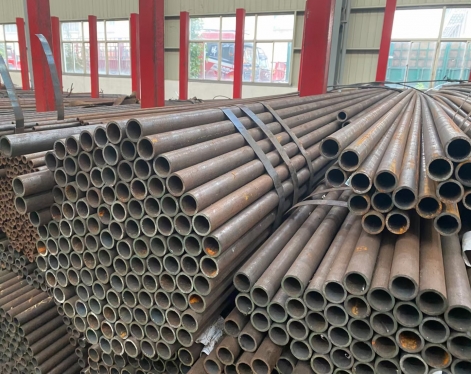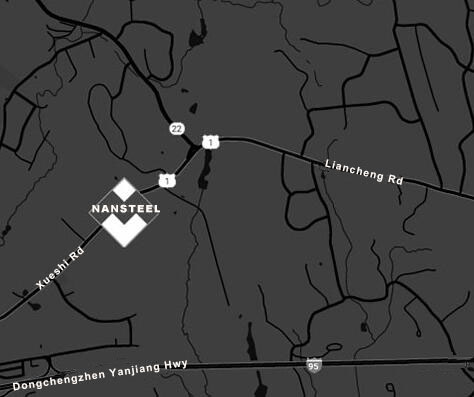Seamless alloy pipes refer to materials containing a certain amount of alloying elements. There are many types of alloy steel, usually classified according to the content of alloying elements: low-alloy steel (content <5%), medium-alloy steel (content 5%–10%), and high-alloy steel (content >10%); according to quality: high-quality alloy steel and special-grade alloy steel; and according to properties and applications: alloy structural steel, stainless steel, acid-resistant steel, wear-resistant steel, heat-resistant steel, alloy tool steel, rolling bearing steel, alloy spring steel, and special-performance steel (such as soft magnetic steel, permanent magnet steel, and non-magnetic steel).
Chemical Elements
1. Carbon (C): Increasing the carbon content in steel raises the yield point and tensile strength, but reduces plasticity and impact resistance. When the carbon content exceeds 0.23%, the weldability of the steel deteriorates. Therefore, the carbon content of low-alloy structural steel used for welding generally does not exceed 0.20%. High carbon content reduces the steel's resistance to atmospheric corrosion, making high-carbon steel in open-air storage yards prone to rust. Furthermore, carbon increases the steel's cold brittleness and aging sensitivity.
2. Silicon (Si): Silicon is added during steelmaking as a reducing agent and deoxidizer, so killed steel contains 0.15-0.30% silicon. If the silicon content exceeds 0.50-0.60%, silicon is considered an alloying element. Silicon significantly improves the elastic limit, yield point, and tensile strength of steel, and is therefore widely used in spring steel. Adding 1.0-1.2% silicon to quenched and tempered structural steel can increase its strength by 15-20%. Silicon, combined with molybdenum, tungsten, chromium, etc., improves corrosion resistance and oxidation resistance, and can be used to manufacture heat-resistant steel. Low-carbon steel containing 1-4% silicon has extremely high magnetic permeability and is used in the electrical industry to make silicon steel sheets. Increased silicon content reduces the weldability of steel. 3. Manganese (Mn): In steelmaking, manganese is an excellent deoxidizer and desulfurizer. Generally, steel contains 0.30-0.50% manganese. Adding more than 0.70% manganese to carbon steel results in "manganese steel," which, compared to ordinary steel, not only has sufficient toughness but also higher strength and hardness, improves hardenability, and enhances hot working properties. For example, 16Mn steel has a 40% higher yield point than A3 steel. Steel containing 11-14% manganese has extremely high wear resistance and is used in excavator buckets, ball mill liners, etc. Increased manganese content weakens the steel's corrosion resistance and reduces weldability.
4. Phosphorus (P): Under normal circumstances, phosphorus is a harmful element in steel, increasing cold brittleness, worsening weldability, reducing plasticity, and deteriorating cold bending performance. Therefore, the phosphorus content in steel is usually required to be less than 0.045%, with even lower requirements for high-quality steel.
5. Sulfur (S): Sulfur is also a harmful element under normal conditions. Sulfur causes hot brittleness in steel, reduces its ductility and toughness, and leads to cracking during forging and rolling. Sulfur also negatively impacts weldability and reduces corrosion resistance. Therefore, the sulfur content is typically required to be less than 0.055%, and for high-quality steel, less than 0.040%. Adding 0.08-0.20% sulfur to steel can improve machinability, often resulting in free-cutting steel.
6. Chromium (Cr): In structural and tool steels, chromium significantly improves strength, hardness, and wear resistance, but simultaneously reduces plasticity and toughness. Chromium also enhances the oxidation and corrosion resistance of steel, making it an important alloying element in stainless steel and heat-resistant steel.
FAQ (Structured Data / Schema Markup)
Q1: What is the main difference between seamless and welded pipes?
A1: Seamless pipes are made from a single billet, ensuring uniformity and no welded joints, offering higher pressure resistance.
Q2: Which materials are commonly used for seamless alloy pipes?
A2: Stainless steel, nickel alloys, chromium-molybdenum steel, titanium alloys, and duplex stainless steel.
Q3: Why are seamless alloy pipes preferred in high-pressure applications?
A3: They have no welds, reducing weak points, and provide excellent mechanical strength.
Q4: How are seamless alloy pipes tested for quality?
A4: Using ultrasonic testing, eddy current testing, hydrostatic tests, and dimensional inspections.









